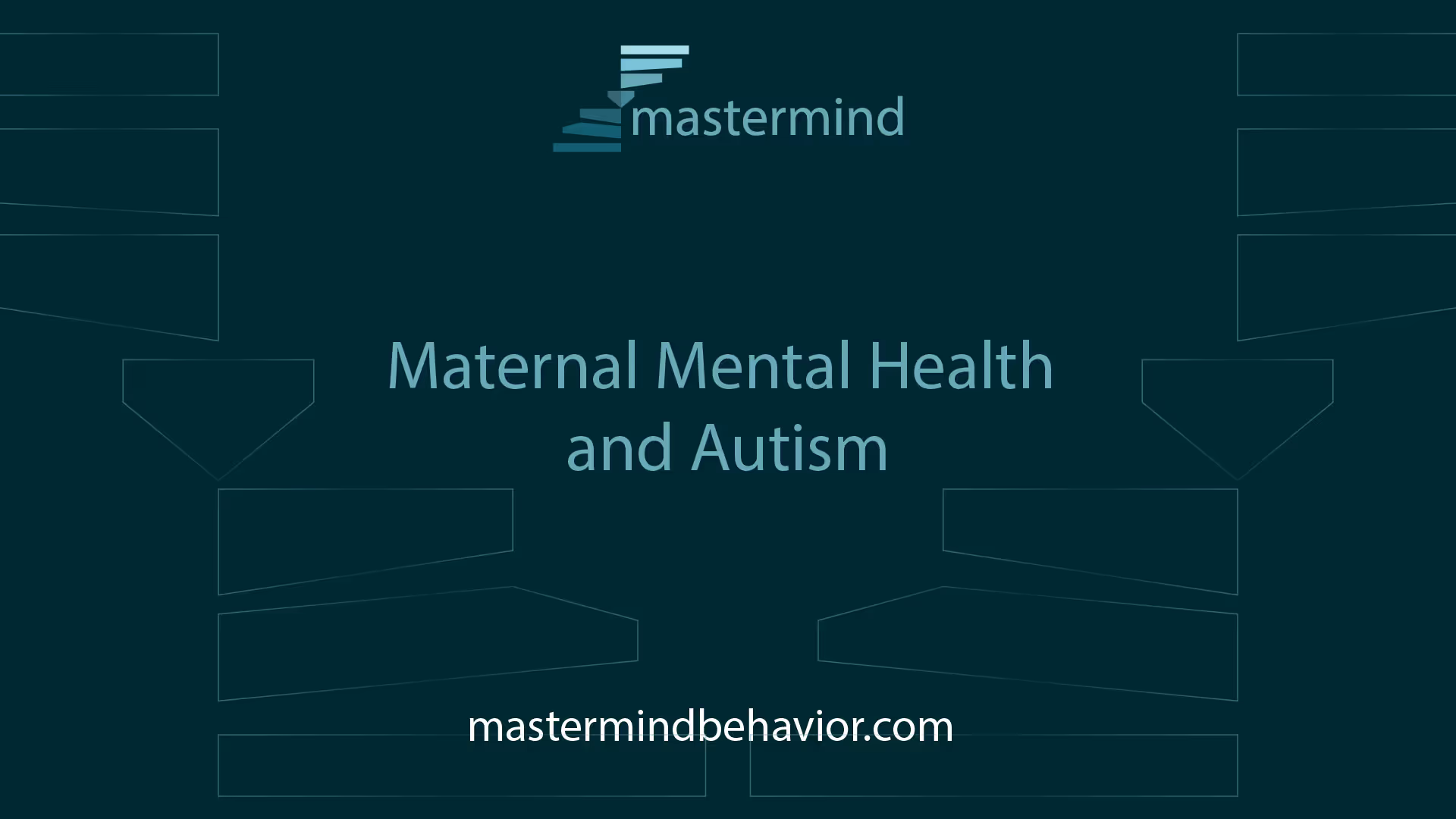Odds Of Having A Child With Autism By Age

Understanding Autism Risk Factors

Understanding the risk factors for autism is crucial for parents and caregivers. This section focuses on the genetic influences and the impact of paternal age on the odds of having a child with autism.
Genetic Influences on Autism
Genetic factors play a significant role in the likelihood of a child being diagnosed with autism. Research indicates that autism spectrum disorder (ASD) often runs in families, suggesting a strong genetic component. Studies have identified several genes associated with autism, and mutations or variations in these genes can increase the risk.
- Family History: If a family has one child with ASD, the likelihood of another child being diagnosed with autism increases.
- Gene Mutations: Certain gene mutations have been linked to a higher risk of autism. These mutations can occur spontaneously or be inherited.
- Twin Studies: Studies involving twins have shown that if one twin has autism, there is a higher probability that the other twin will also be diagnosed with autism, particularly in identical twins.
Paternal Age and Autism Risk
The age of the father at the time of conception can significantly influence the risk of having a child with autism. Research has shown that older paternal age is associated with a higher likelihood of autism.
A major study conducted in Sweden found that males older than 45 years at the time of their child's birth are 3.45 times more likely to have children with autism [1]. This study highlights the impact of paternal age on autism risk.
Data from Verywell Health
Recent studies have also found that advanced age in both parents is linked to an increased risk of autism in their children [2]. The rise in ASD risk with parental age is more significant for older mothers compared to older fathers. However, the risk is still substantial for older fathers.
For more insights into autism treatment options, both for children and adults, you can explore our articles on autism treatment for children and autism treatment for adults.
Understanding these risk factors can help parents and caregivers take proactive steps in seeking early diagnosis and intervention, such as free ABA therapy services for my child with autism.
Maternal Factors and Autism Risk
Maternal Health During Pregnancy
Maternal health during pregnancy is a significant factor influencing the odds of having a child with autism. Various physical health conditions can contribute to an increased risk.
Key Maternal Health Factors:
- Metabolic Syndrome: Conditions such as obesity, hypertension, and diabetes can elevate the risk of autism in offspring.
- Infections: Maternal infections during pregnancy have been linked to a higher chance of autism in children.
- Bleeding During Pregnancy: Research indicates that maternal bleeding during pregnancy is associated with an 81% elevated risk of autism.
For more on how maternal health impacts autism risks, visit our section on autism treatment for children.
Maternal Mental Health and Autism

Maternal mental health is another crucial factor that can affect the likelihood of having a child with autism. Various mental health conditions have been shown to increase this risk.
Mental Health Conditions and Autism Risk:
- Parental Psychiatric History: A history of psychiatric disorders in parents, such as schizophrenia, can nearly triple the risk of autism in children.
- Maternal Depression and Anxiety: Studies have shown a strong association between maternal depression, anxiety, and an increased risk of autism.
- Personality Disorders: Maternal personality disorders have also been linked to a higher susceptibility to autism in children.
Understanding these factors can help in early diagnosis and intervention. For those seeking free ABA therapy services for their child with autism, early intervention can be crucial.
By considering both maternal physical and mental health, parents can better understand the potential risks and take proactive steps to address them. For more insights, visit our articles on autism treatment for adults and is your autistic adult child ready to move out?.
Prenatal and Postnatal Risk Factors
Understanding the risk factors for autism is crucial for parents and caregivers. This section delves into the prenatal and postnatal risk factors that can influence the odds of having a child with autism by age.
Prenatal Medication Use
Maternal prenatal medication use is a significant risk factor for autism. Research indicates that prenatal exposure to certain medications can be associated with a 46% increased risk of autism in the fetus [3]. Different types of drugs, including antiepileptic drugs, valproic acid, paracetamol, and antidepressants, can impact fetal development and increase the risk of autism.
These figures highlight the importance of discussing medication use with healthcare providers during pregnancy. Understanding the potential risks can help in making informed decisions regarding prenatal care.
Postnatal Conditions and Autism
Postnatal conditions play a crucial role in the development of autism. Several factors, including low birth weight, jaundice, and postnatal infections, are significant risk factors for autism. For instance, a neonate with a birth weight less than 2500g is associated with a two-fold increase in the risk of autism [3]. Additionally, postnatal jaundice and infections during the first 30 days of life have also been correlated with a high risk of autism.
These findings underscore the importance of monitoring and addressing postnatal conditions to reduce the risk of autism in children. Early intervention and proper medical care can make a significant difference in the outcomes for children with these risk factors.
For more information on autism treatment options, explore our articles on autism treatment for children and autism treatment for adults. Additionally, parents seeking support can find free ABA therapy services for their child with autism to help their child thrive.
Environmental Factors and Autism
Environmental factors play a significant role in the odds of having a child with autism. This section explores two critical environmental aspects: air pollutants and folic acid intake.
Air Pollutants and Autism
Research has shown that exposure to certain air pollutants is associated with an increased risk of autism. Children exposed to higher levels of specific pollutants before and after birth were more likely to develop autism. These pollutants include those found in pesticides used on farms and hazardous chemicals in the environment.
Heather E. Volk and her team conducted a study highlighting that prenatal and postnatal exposure to air pollutants significantly contributes to the risk of autism. Understanding these risk factors can help parents take preventive measures to minimize exposure.
For more information on autism treatment and support, visit our page on autism treatment for children.
Folic Acid Intake and Autism Risk
Folic acid is a vital nutrient that can influence the likelihood of having a child with autism. Research indicates that taking folic acid around the time of conception can counteract the effects of toxic chemicals in the environment and reduce the risk of autism. Folic acid supplementation before and during pregnancy also decreases the chances of neural tube defects like spina bifida.
Ensuring adequate folic acid intake can be a crucial step in improving overall pregnancy outcomes and reducing the odds of autism. For parents seeking further guidance on supporting their child with autism, explore our resources on free aba therapy services for my child with autism.
By addressing these environmental factors, parents can make informed decisions to potentially reduce the risk of autism in their children.
Latest Research on Autism Risk

Recent studies have provided deeper insights into the odds of having a child with autism by age, focusing on genetic clues and maternal age.
Genetic Clues and Autism Risk
Genetic factors play a significant role in the likelihood of having a child with autism. Researchers have identified various genetic markers and mutations that are associated with an increased risk of autism. Genetic studies have revealed that inherited genetic variations, as well as de novo mutations (mutations that are not inherited but occur spontaneously), can contribute to the development of autism spectrum disorder (ASD).
Recent studies have found a connection between advanced age in both parents and the likelihood of having autistic children [1]. For instance, a major study conducted in Sweden concluded that males older than 45 at the time of the child's birth are 3.45 times more likely to have autistic children [1]. This increased risk is thought to be due to the accumulation of genetic mutations in sperm as men age.
To understand the genetic influences on autism further, it is essential to consider both paternal and maternal genetic contributions. The interplay between inherited genetic factors and environmental influences can complicate the determination of specific autism risk factors. For more information on autism treatments, explore our article on autism treatment for children.
Maternal Age and Autism Risk
Several studies have established a strong independent connection between higher maternal age and autism. Research indicates that the odds of having a child with autism rise with maternal age, particularly for mothers aged 30 and older [2].
Data suggest that having a younger father does not protect against autism when the mother is over 35. The increased risk is possibly due to various factors, including changes in egg quality and the higher likelihood of pregnancy complications in older mothers.
Although the risk of autism increases with maternal age, it remains relatively low on an individual level. For mothers up to age 45, the risk is still less than 2 in 100. Therefore, while age is an important indicator at the population level, it may not significantly impact family planning decisions for most couples.
For additional insights on autism prevalence and risk factors, visit our articles on free aba therapy services for my child with autism and is your autistic adult child ready to move out?.
Autism Prevalence Insights
Understanding the prevalence of autism can provide valuable insights into how various factors influence the likelihood of a child being diagnosed with autism. This section explores the prevalence of autism by demographics and regional variances.
Autism Prevalence by Demographics
The prevalence of autism has shown notable differences across various demographic groups. According to a CDC report, the prevalence among Asian, Black, and Hispanic children increased by at least 30% in 2020 compared to 2018. In contrast, White children showed a 14.6% increase in the same period. For the first time, the percentage of 8-year-old Asian or Pacific Islander (3.3%), Hispanic (3.2%), and Black (2.9%) children identified with autism was higher than among 8-year-old White children (2.4%).
This shift may be attributed to improved screening, increased awareness, and better access to services among historically underserved groups. These changes highlight the importance of ensuring equitable access to diagnostic and intervention services across all demographic groups.
Regional Variances in Autism Prevalence
Autism prevalence also varies significantly by region. Data from the 11 Autism and Developmental Disabilities Monitoring (ADDM) communities show a range of prevalence rates. For instance, the prevalence in Maryland was 1 in 43 children (2.3%), while in California, it was 1 in 22 children (4.5%).
These disparities can be attributed to how different communities identify and diagnose children with autism. Local policies, available resources, and models for delivering diagnostic and intervention services play a crucial role in these variations. Understanding these differences can offer valuable lessons for improving autism-related services nationwide.
For more information on how to support children with autism and ensure they thrive, check out our resources on free aba therapy services for my child with autism and autism treatment for children.
References
[1]: https://www.verywellhealth.com/older-parents-and-autism-risk-for-child-5199211
[2]: https://drexel.edu/news/archive/2014/april/autism-risk-older-parents
[3]: https://www.ncbi.nlm.nih.gov/pmc/articles/PMC5377970/
[4]: https://sparkforautism.org/discover_article/environment-autism/
[5]: https://www.cdc.gov/media/releases/2023/p0323-autism.html
Recent articles

How to Encourage Cooperative Work and Play Among Children with ASD
Building Bridges: Fostering Social Cooperation in Children with ASD

How ABA Therapy Can Help with Task Completion and Focus
Unlocking Independence: The Role of ABA in Enhancing Focus and Task Skills

Understanding the Role of Social Skills Groups in Autism Treatment
Harnessing Social Skills Groups for Better Autism Support

The Importance of Visual Learning Tools in Autism Education
Enhancing Education Through Visual Supports for Autism

How Parent-Implemented Strategies Can Improve ABA Therapy Outcomes
Enhancing Autism Interventions Through Family Engagement

How to Support Advocacy Efforts for Autism Awareness and Acceptance
Championing Neurodiversity: Strategies and Resources for Autism Advocacy


